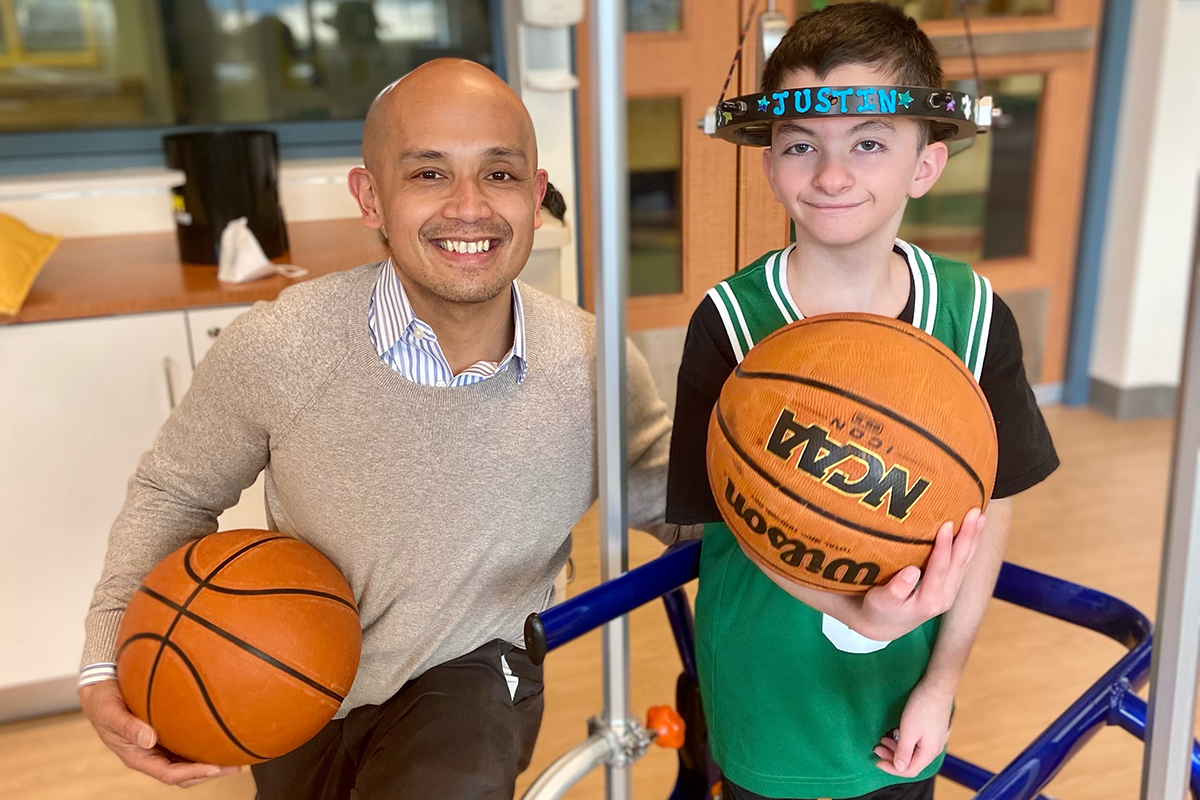-
Services
Featured Specialties
-
Locations
Location Type
-
Patients & Visitors
Published August 10, 2022

Elizabeth Reynoso was tired of the wait and see approach. Her son Justin developed a hunched posture around age 3 that physical therapy, back braces and casts did not improve. People would ask if Justin was in pain – he didn’t quite know how to answer as this was the only way of life he ever knew.
“When my son was first diagnosed with scoliosis I poured over the literature and joined support groups so I could be first in line to hear about the latest treatments,” said Elizabeth.
Through these groups, Elizabeth learned about halo-gravity traction, a method of gently straightening a curved spine. The procedure involves a metal ring attached to the child’s skull (the halo) with small pins. Once the halo is secured, a clinician attaches it to a weighted pulley system that adjusts the spine into alignment. When the spine has reached its best possible position, the child will have spinal fusion surgery to permanently stabilize their spine.
“No doctor had ever brought this procedure to our attention, so I assumed it wasn’t an option for us,” said Elizabeth.
That assumption changed the day she met Dominick Tuason, MD, a pediatric orthopedic surgeon with an expertise in complex spinal deformity at Yale New Haven Children’s Hospital (YNHCH). Dr. Tuason’s team had recently brought the procedure to the Pediatric Spine Program at YNHCH along with a multidisciplinary team to meet the physical, emotional and educational needs of patients and families.
“Adding the halo procedure dramatically changes options for children needing spine care,” said Dr. Tuason. “There was deep collaboration to install the halo device, ensure our nurses had the highest level of education and put supports in place for families who make great sacrifices to get care here for weeks at a time.”
Before Justin got to the hospital, child-life specialists made Justin and his younger brother a book to show them how the procedure worked. “It was fun and made me a little dizzy,” said Justin, now 11 years old, who admitted his mother got nervous when he would pick his feet up and use the pulley to spin around.
“Halo traction looks super scary when you first see it,” said Elizabeth. “However, it was the best decision we made. The satisfaction of seeing Justin stand taller was so emotional. I saw my son take a full deep breath for the first time, he was more flexible and he even gained some height.”
These improvements were not just apparent to Justin and his mom. “To see Justin’s spinal X-ray films on a weekly basis was remarkable,” said Dr. Tuason. Justin spent hours in the halo device each day and eventually went from 105 degree curve down to 64 degrees after the traction.
After a few weeks of the halo, Justin was ready for a surgery that would involve inserting rods in his spine for long-term healthy growth and positioning. The rods are magnetically controlled and can be expanded with a remote instead of taking Justin back to the operating room. Because halo traction allowed Justin to achieve some spinal correction and improved pulmonary function, Justin’s surgery was much safer than it would have been otherwise.
Justin spent a total of three weeks in the hospital, was discharged March of 2022 and was playing basketball by June.
“Justin exudes strength and positivity. He consistently achieves the goals he sets for himself and we couldn’t be prouder,” said Elizabeth.